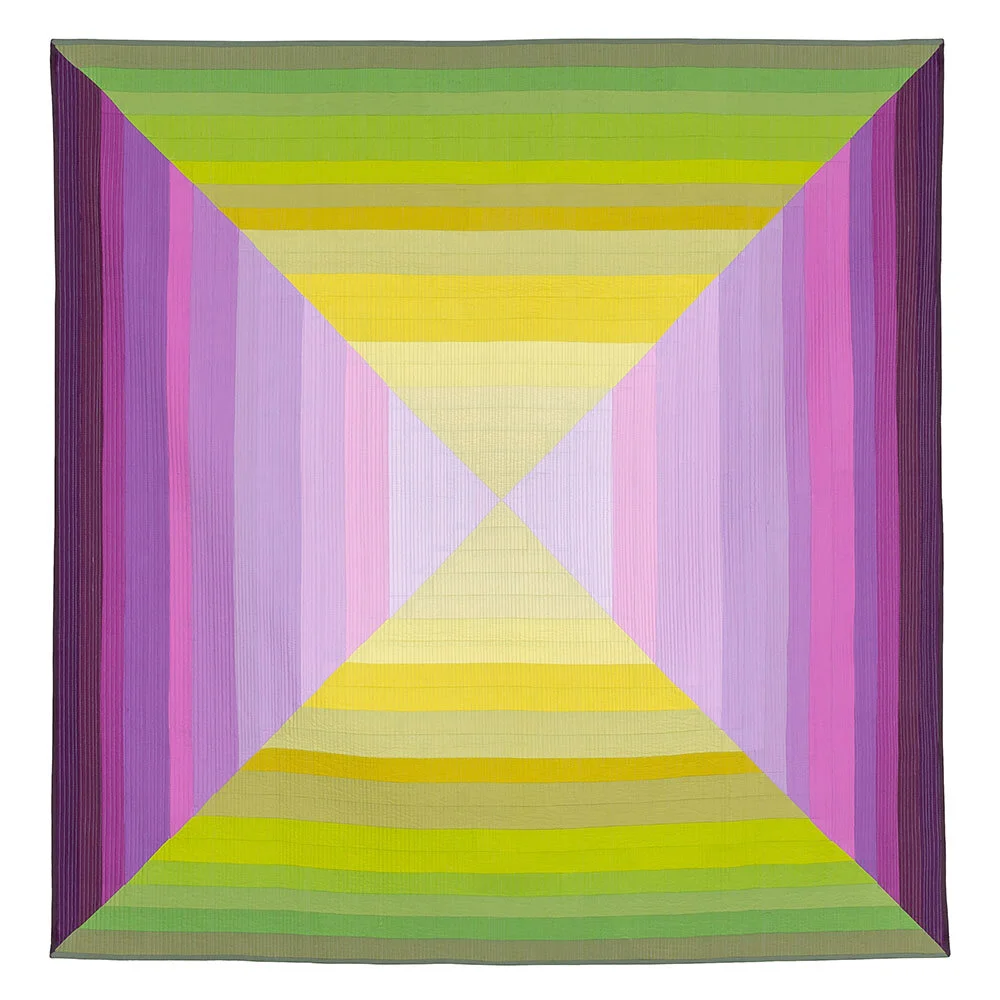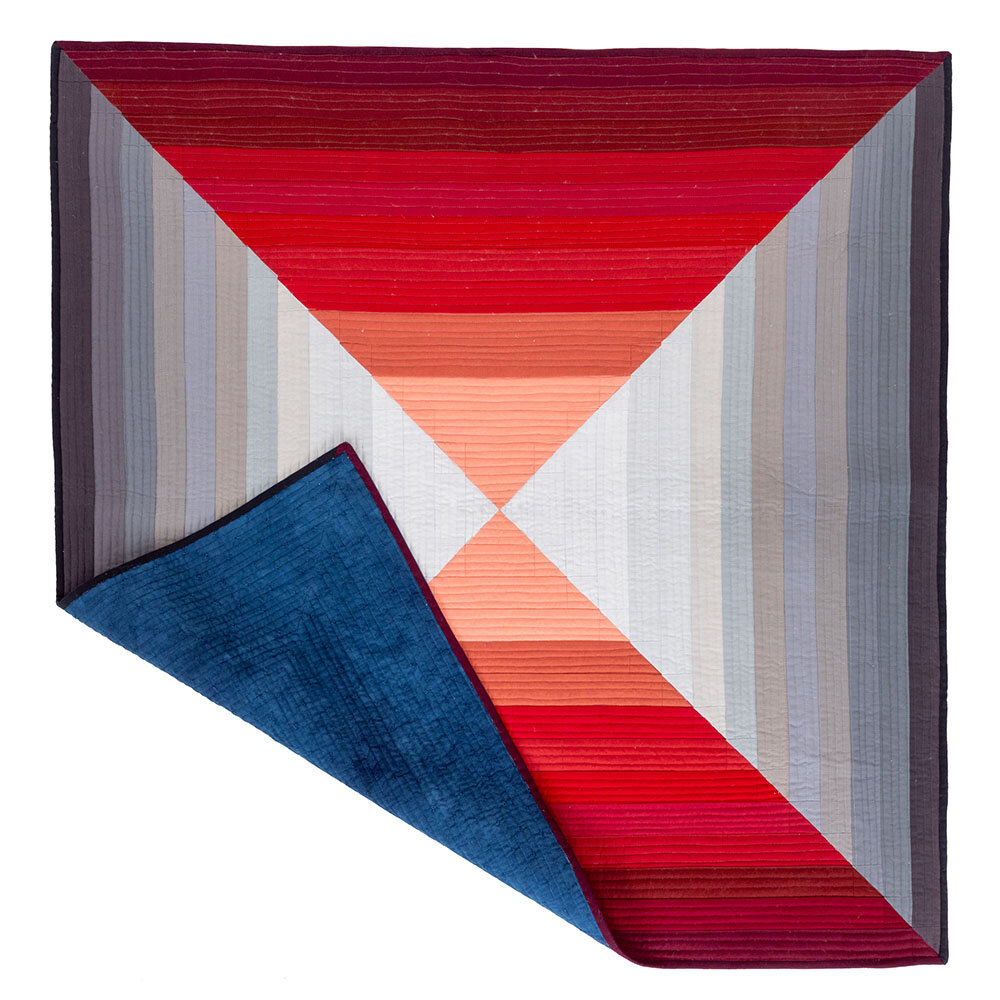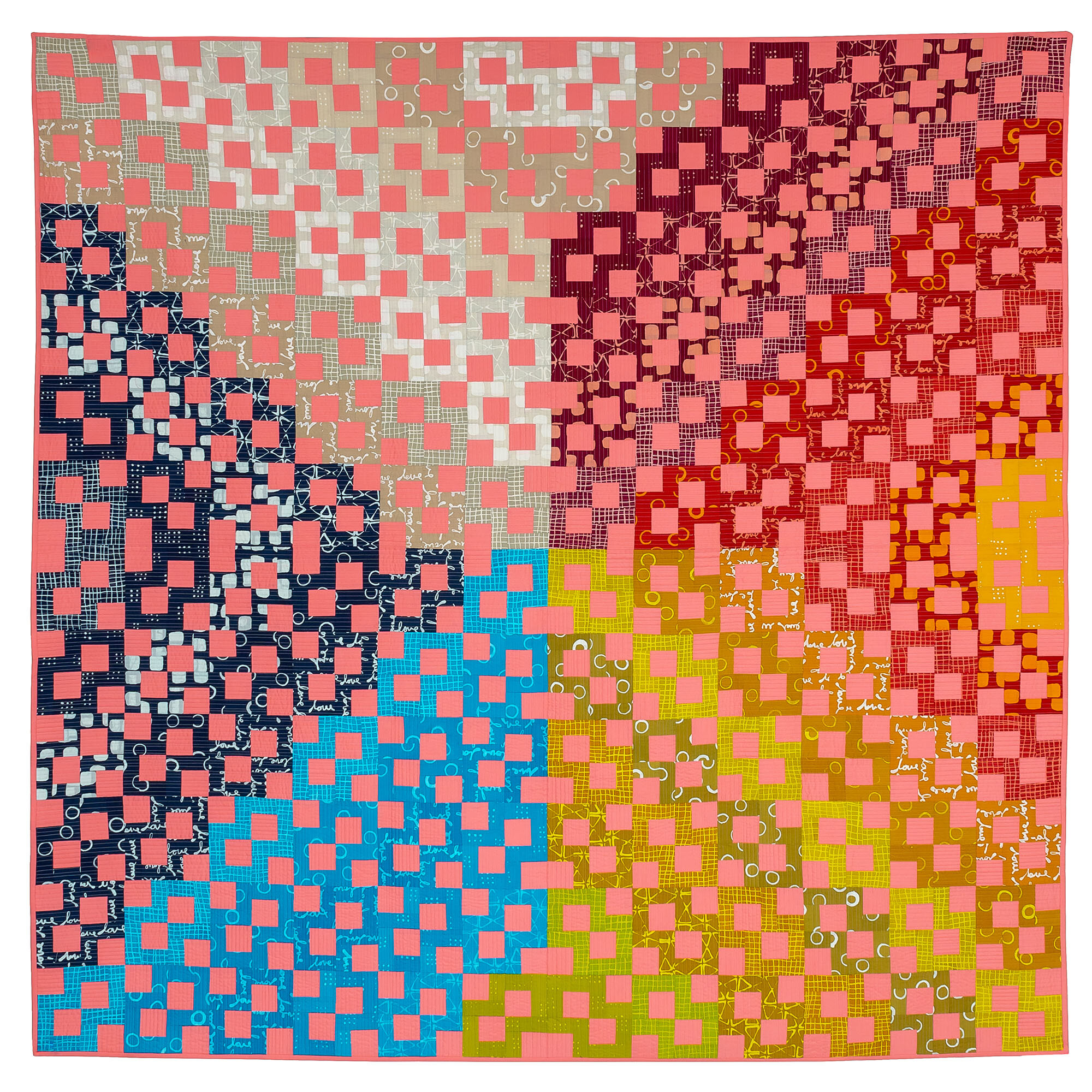Not every pattern I design has an extensive and well-documented history, but this one does. Initially inspired by a relatively straightforward graphic design, what I call C O I L has yielded so many variations and made its way into both quilts and garments.
It all started here:
Originally pinned to my Pinterest/Pattern Play Board.
This image lived on my Pinterest Pattern Play board for a long while before I started experimenting with ways to re-imagine it in patchwork.
I knew I wanted to preserve the interlocking quality of the original and, at first, to interpret the design in ombre-dyed fabrics.
Wall quilt and pillow in ombre shades of rust and indigo. Both items available as made-to-order pieces in my store.
Though simplified, I felt like these versions stuck pretty closely to the original design. I started to wonder how it would look as a drawn element.
I made two versions of this pillow, both hand drawn with dye on to a dyed base fabric. The top is quilted and backed with a zippered backing also crafted in a hand dyed fabric.
…or on a much larger scale…
Rainbow Coil measures about 72” x 72”
The early versions featured arcs that felt a bit squared off. What if I played with that?
Mini Coil in hand dyed cottons in an ombre color way.
What if the coils were made out of different ombre color ways?
Should the coils speak?
H O P E quilt
What would they look like in other color ways?
Cover image for the C O I L mini quilt pattern
As a longtime garment sewist, could I find a way to marry those interests?
Friday Pattern Company’s Ilford jacket re-imagined as a quilt coat.
Hey June Handmade’s Greer Jumpsuit with Coil pockets.
I don’t know what I’ll do with this design next, but I do know it’s time to share it with others and see what they make. So, my latest iteration is to write the pattern with instructions and illustrations and templates. I can’t wait to see your C O I L S!



































